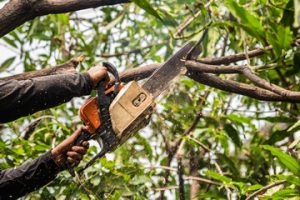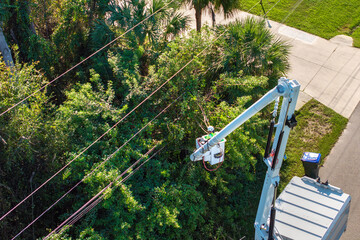Worcester Tree Removal is a critical service for maintaining safe properties. Every tree presents unique challenges for professionals. Assessing health, size, and location is essential. Proper planning prevents accidents and structural damage.

Some trees are removed due to disease or decay. Fungi, insects, and rot can compromise stability. Early removal protects nearby plants and structures. Preventing spread is often more cost-effective than treatment.
Urban tree removal presents additional risks. Power lines, buildings, and sidewalks complicate the process. Professionals must evaluate every angle carefully. Precision reduces potential hazards in crowded areas.
Emergency removal is a vital part of the service. Storms, high winds, and floods can damage trees unexpectedly. Quick response prevents further property damage. Safety remains the top priority during urgent operations.
Modern equipment enhances tree removal efficiency. Hydraulic lifts, chainsaws, and cranes allow safe handling. Some tools can reach confined or elevated spaces easily. Technology helps reduce labor and increase precision.
Stump and root removal is often necessary after cutting. Leftover stumps can sprout new growth or attract pests. Grinding or chemical treatment ensures complete removal. This prepares the site for future landscaping.
Environmental considerations influence removal decisions. Trees provide habitats, reduce erosion, and improve air quality. Removing them without strategy can disrupt ecosystems. Professionals balance safety with environmental preservation.
Seasonal timing affects tree removal safety and efficiency. Winter may make soil firmer, supporting equipment weight. Summer provides easier access to dry, stable ground. Choosing the right season minimizes risks and costs.
Some trees are removed to improve sunlight and airflow. Dense canopies can block light, hindering plant growth. Proper removal encourages healthier landscapes. It also reduces mold and mildew in shaded areas.
Tree removal can prevent future hazards. Leaning or unstable trees may threaten buildings or pedestrians. Proactive removal is safer than waiting for failure. Prevention reduces emergency situations and repair costs.
Permits may be required for certain trees. Protected or large specimens often need authorization. Compliance ensures legal and environmental safety. Professionals guide clients through permit processes.
Tree removal enhances property aesthetics. Overgrown or dead trees can detract from landscape appeal. Removing them improves sightlines and harmony. Gardens and yards appear more organized and inviting.
Some trees require sectional removal for safety. Large branches are cut from the top down. This controlled approach prevents sudden falls. Careful sequencing protects both crew and property.
Rope-assisted cutting is used in tight or sensitive areas. It allows controlled lowering of branches. This technique minimizes property damage. It is particularly useful in urban or landscaped spaces.
Tree removal interacts with wildlife considerations. Birds, squirrels, and other animals may inhabit trees. Professionals check for nests and relocate wildlife when necessary. Humane practices maintain ecological balance.
Proper disposal of tree material is part of the process. Logs, branches, and leaves can be repurposed. Mulch, firewood, or composting reduces waste. Responsible handling supports sustainable landscaping.
Soil restoration often follows tree removal. Exposed ground can erode or compact without treatment. Professionals prepare soil for replanting or turf installation. This maintains landscape stability and health.
Advanced techniques include crane-assisted removals. Large or precarious trees can be dismantled safely. Controlled lowering prevents accidents and property damage. Technology ensures efficiency in complex operations.
Chemical treatment may precede some removals. Pesticides or fungicides reduce contamination risks. Treated trees can be safely cut and disposed of. This protects surrounding vegetation and soil.
Tree removal supports infrastructure projects. Roads, utilities, and pipelines often require clearing. Coordinating with construction teams ensures safety and timing. It balances human needs with environmental care.
Cabling and bracing can delay full removal. Weak trees may be reinforced for stability. This prolongs life while reducing risk. It is a proactive alternative when cutting is not immediately necessary.
Education is an important part of tree removal services. Clients learn about risks, timing, and maintenance. Awareness reduces hazards and supports better long-term planning. Knowledge complements technical expertise.
Tree removal intersects with water management. Roots can interfere with drainage systems or sewer lines. Professionals plan cutting to avoid water flow issues. Proper handling prevents costly repairs and flooding.
Some trees are removed for landscape redesign. Clearing overgrown areas allows better planning and planting. Professionals coordinate with designers for optimal outcomes. Integration of removal and design ensures functional, attractive spaces.
Tree removal contributes to disaster preparedness. Removing weak or overgrown trees reduces storm damage. Communities benefit from safer streets and yards. Planning ahead protects both people and property.
Modern tree removal also considers energy efficiency. Strategically placed trees can block or allow sunlight. Removing or preserving trees affects heating and cooling needs. Experts evaluate environmental benefits and risks.
Tree removal in historical areas requires care. Heritage or culturally significant trees may need partial removal. Preservation efforts balance safety with legacy. Professionals navigate regulations and sensitivity.
Urban and suburban removal projects differ greatly. Dense developments require precision to avoid damage. Open landscapes allow more flexibility in cutting. Each scenario requires a tailored approach.
Planners consider long-term soil stability during removal. Large roots and stumps impact ground composition. Correct planning prevents erosion or shifting. It supports future landscaping and construction.
Recycling removed trees has expanded with innovation. Wood chips, mulch, and timber are repurposed creatively. Waste reduction enhances sustainability. Every stage of removal considers environmental responsibility.
Tree removal affects lighting and airflow in residential areas. Clearing obstructive trees brightens interiors and improves ventilation. Proper placement of remaining trees optimizes environmental benefits. Planning maximizes functional and aesthetic outcomes.
Professional arborists assess tree health before removal. They check for rot, cracks, or insect infestation. Accurate assessment prevents accidents during cutting. Early detection also protects surrounding plants and structures.
Root ball extraction is critical for new landscaping. Removing roots properly avoids interference with new plants. Grinding and soil preparation follow removal. This ensures healthy regrowth and a stable site.
Tree removal services are expanding with community programs. Urban forestry initiatives often require selective removal. Professionals advise on species, timing, and impact. Balanced planning maintains ecological and social benefits.
Advanced machinery allows removal in challenging terrains. Hillsides, alleys, and rooftops are accessible with specialized equipment. Technology reduces manual labor and improves safety. Efficient operations save time and minimize damage.
Tree removal is both a science and an art. Safety, environmental care, aesthetics, and logistics must align. Each project demands expertise and foresight. Modern removal practices combine knowledge, planning, and precision.
